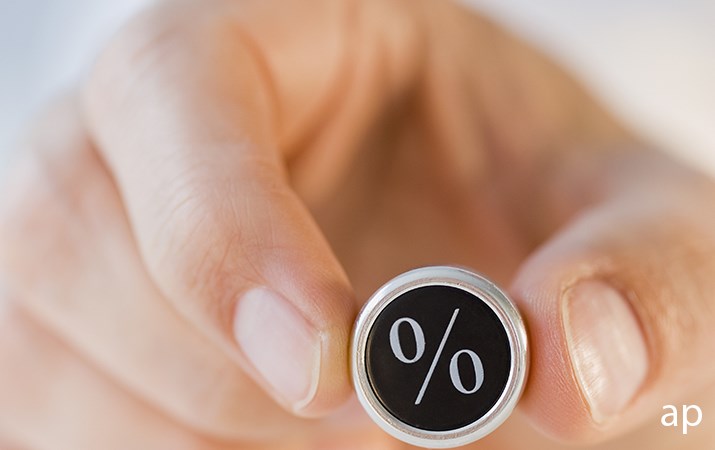
Absolute return funds have gone from being a darling of the investment world to one of the most unloved sectors in the past 18 months, as some of the most overhyped strategies failed to deliver during a volatile 2018.
The Targeted Absolute Return sector has been the worst seller among retail investors in eight out of the 12 months to the end of September, according to Investment Association data. Over the course of 2018, it shed some £2.2bn. Much of this was the result of poor performance, with the average fund in the sector down 2.2%, according to Chelsea Financial Services.
Some of the worst affected funds in the group were the highest profile multi-strategy vehicles that promised real diversification benefits but failed to achieve their objectives: the Neutral-Rated ASI Global Absolute Return Strategy, commonly known as GARS; Neutral-Rated Invesco Global Targeted Returns and Aviva Multi-Strategy Targeted Return.
During 2018, Aviva’s fund was down 6.1%, GARS fell 6.4% and Invesco’s fund closed the year 3.8% lower. All three underperformed the sector over three and five years, but it seems 2018 was the final straw for investors who were hoping to gain protection from stock market falls.
Consequently, all three funds have shed assets over the past 18 months. The ASI Global Absolute Return Strategy bore the brunt of the outflows, losing more than two thirds of its value with an eye-watering £12.5 billion of outflows over 18 months to the end of October, according to Morningstar data. The size of the UK-domiciled portion of the fund is now just £6.1 billion, down from a peak of close to £18 billion.
Its biggest competitors from Aviva and Invesco have also seen assets dwindle. Aviva saw total outflows of more than £3 billion from its UK and Luxembourg-domiciled vehicles, with total assets in the strategy at £5.8 billion, while Invesco’s vehicle has shed £2.4 billion over the same period to stand at £9.9 billion.
Darius McDermott, managing director at Chelsea Financial Services, says: “GARS really made its name in 2008, when global markets were down 40%, the UK was down 30%, but it was nearly positive.
“For a decent period of time, GARS was delivering and that’s why it raised as much money as it did, and why Invesco and Aviva launched me-too products. But GARS hasn’t been on our buy list for a good few years. When it started to get too big and get negative returns we got out.”
Disappointing Performance
The disappointing performance of the strategies over a rolling three-year period is just one of the reasons investors are ditching multi-strategy absolute return funds. The other related issue is the lack of diversification benefits these vehicles provide. For example, the correlation of GARS to the MSCI AC World index is 0.6, not negative as one might expect, McDermott says (a correlation of 1.0 shows two assets move perfectly in sync, 0 indicates no correlation, while -0.1 shows they move in opposite directions).
And finally, as Ben Yearsley, director at Shore Financial Planning, puts it: “Many of these funds have tried to be too clever and too complicated”. This has put off investors unable to understand the sources of return in these strategies.
Daniel Elkington, chartered financial planner at MT Financial Management, began selling out of targeted absolute return funds following the EU referendum in June 2016, having noticed that his own portfolios performed better than the majority of absolute return funds during this volatile period.
“That is the sort of event when targeted absolute return funds should have done really well, but none of them did very well at all,” he says. “Another problem is when you are holding something like a long/short equity strategy, you are effectively buying 50% equity, 50% cash and paying a lot more for it.”
Genuine Alternatives
Instead, Elkington has replaced the absolute return holdings with what he considers genuine alternative asset classes, such as property, gold and oil, which he says has worked well so far. These asset classes tend to offer a similar return to equities, but at different times in the cycle.
One fund he has chosen for this task is the TM Home Investor fund run by Hearthstone Investments, which invests in residential property. Elkington says the fund is “fairly boring and vanilla” but offers genuine diversification to bonds and equities.
Yearsley says the choice of a replacement fund for a GARS-type product depends on what characteristics investors want from it. A number of funds offer defensive characteristics and steady growth “without the complicated nature of a GARS-style fund”.
One such product is Architas Diversified Real Assets, co-managed by Solomon Nevins and Mayank Markanday. “All the holdings are long-only and it invests in real things such as renewable energy, gold or other asset-backed investments,” Yearsley explains.
“Another fund to look at is Time Defensive Income Securities - a relatively new fund that invests in the listed renewables and infrastructure space and looks to deliver around a 5% income plus modest capital growth over time,” he adds.
However, McDermott is sticking with some products from the Targeted Absolute Return sector, including the Morningstar Neutral-rated Jupiter Absolute Return fund, run by James Clunie, and Merian Global Equity Absolute Return, both of which have negative correlation to the MSCI AC World index. Others include the SVS Church House Tenax Absolute Return Strategies and TwentyFour Absolute Return Credit funds.
While McDermott thinks the overall performance of these funds has been disappointing, he points out that some of the strategies “really came into play in Q4 last year. When markets were suffering, they did defend and reminded us why we owned them”.




























